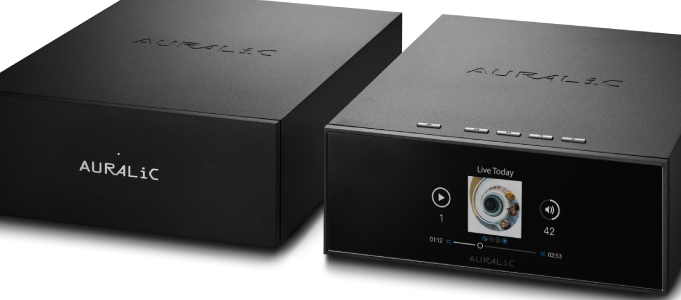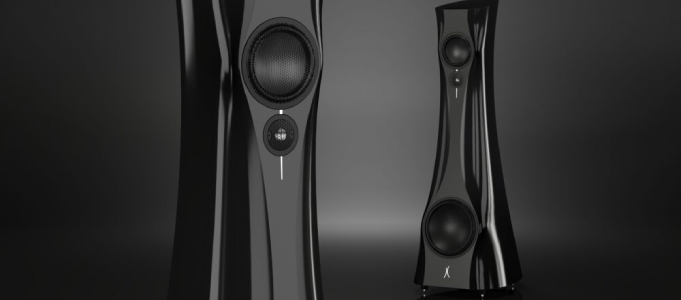LUMIN M1 STREAMING AMPLIFIER REVIEW

Prefer to read the PDF? Click below to download our in-depth review of the Lumin M1 Streaming Amplifier. Otherwise, read on.
Lumin. No, I hadn’t heard of them either.
If you’d asked me a month or so ago, I would have likely mistaken them for a specification one might look at when researching a projector, or even a character from the Dexter TV Series.
In this case however, Lumin is a brand of high-end audio products (surprise!) from Hong Kong based company, Pixel Magic.
Pixel Magic formed back in 2003 and on paper appear to be focused primarily on Digital TV solutions, but appearances can be deceiving.
I discovered upon contacting Pixel Magic that they have been involved in serious audio for quite some time, confirming that:
Lumin is actually not our first audio product! ...more than 10 years ago, we had an HD Mediabox ‘Audiophile Edition’, designed (amongst other things) to playback high resolution audio files!
I managed to have a small amount of back and forth with Li On from Pixel Magic and asked him what drove him and colleagues to start work on developing high-end audio products such as Lumin.
His response was both candid and direct:
Long story short, it is because we are all audiophiles here!
Myself and many audiophile friends, we all wanted a better quality high end music streamer… (when) SACD ripping was possible for the first time, we looked in the market for an audiophile streamer which was DSD playback capable, sadly there were none! The rest is history.
It wasn’t until 2012 however that they developed their first Lumin Audiophile Network Music Player.
The M1, the subject of this review, takes their existing streamer platform and integrates a 2 x 60 watt (into 8 ohms) amplifier into the mix.
It supports AAC, MP3, FLAC, ALAC, WAV, AIFF, as well as DSD formats, DSF, DIFF and DoP.
.jpg)
Setup
The Lumin M1 came packaged exceptionally well, double boxed, and within fabric protection. Also included is even a pair of handling gloves so as not to get fingerprints on the finish. And what a finish it is!
While not nearly the weightiest component I’ve held (the M1 weighs in at just 4.5kg), the build quality still appeared to be outstanding. The front aluminium panel was a not insignificant 10mm thick and was brushed to perfection.
Without doubt, the casework is meticulously constructed.
There is a wonderful simplicity in a product like the M1, there’s no need for interconnects and not having to worry about external power supplies, you just connect your speakers (the M1 has high quality binding posts suitable for spades, banana plugs or bare wire), wire it up to your network with Ethernet and plug it into power.
The M1 has been used previously in the StereoNET office, so in the interest of diplomacy, I engaged the ‘Reset’ switch on the rear panel to gauge setup ease from factory settings.
Upon opening the Lumin control app, it had already located the player as well as my network shares. It prompted me to select my library, which I did.
The M1 also caters for streaming services Tidal and Qobuz, as well as Internet Radio.
If you’re thinking of plugging in that old turntable though, you’d best think again as the M1 is geared towards one purpose and one purpose only, streaming.
.jpg)
The Lumin M1 is an example of a Digital Direct type amplifier, not unlike my NAD M2.
It keeps any data in the digital domain right up to the speaker outputs where digital to analog conversion takes place.
The benefit of this technology is an exceptionally low noise floor as the signal isn’t sent through any unnecessary gain stages, it simply comes in as digital data and stays that way up until you hear it come out of the speakers.
There are no connections either digital or analog for external sources, with the exception of Type A USB inputs on the rear for external storage devices.
The front panel simply consists of a power switch, volume dial and smart looking OLED screen.
The M1 also supports Apple AirPlay, and as a result could be used as a Roon access point provided you are happy with a maximum 16/44.1 resolution.
Tapping the Tidal icon on the control app prompted me to login. From the get go, this was going to be an interesting test.
I connected the Lumin M1 to my ELAC BS 403’s.
They are a 4-ohm nominal load and aren’t easy to get sounding their best, dipping down as low as 3 ohms at certain frequencies. When I first got them I had to go on a bit of an amplifier hunt, trying a variety of different amplifiers before ultimately settling on my Vincent SV-237.
It seemingly offered the best balance with the speakers (or at least it did to my ears). With that in mind, it would be interesting to see how they respond to the Lumin M1.
.jpg)
Listening
I have been a fan of Bon Iver for years, but not quite since their first album. Their self titled release was the first I had become accustomed with. I’m also part of the minority who enjoyed the second release more so than the first, a travesty!
‘22, A Million’ is their third studio release and I have to say, it hasn’t taken long at all for it to have grown on me. The production work is excellent; it embodies everything I liked about their previous releases whilst taking the band forward in a whole new direction.
The bass response coming out of my ELAC’s during track two, ‘10dEAThbREasT’ was astonishing, it rivalled what I’m used to from my regular Vincent combination.
The background ‘gibberish’ on 33 ‘GOD’ had a clear place on the left and right outskirts of the mix, the dark beat enveloped my listening room. Yeah, the Lumin could do dynamics.
If there was a characteristic I could tag the M1 with, it would be one of neutrality. It appeared clean without being analytical, and musical without drifting towards being lush.
.jpg)
Solange Knowles doesn’t seem to get nearly as much recognition as her sister, but her new album ‘A Seat at the Table’ is an outstanding musical statement.
The opening track, ‘Rise’ gave great depth, the hi-hats in particular had a really nice bite without sounding at all hard.
The sixth track, ‘Mad’ hit with huge impact. It began with a phat and I mean PHAT beat.
Whilst listening, I had wandered into my own little world, but this track immediately had me perk up and take notice once again. Punchy brilliance.
Not wanting to let me lose focus, track seven ‘Don’t You Wait’ started off equally as ambitious, helping me to once again get lost in the dynamic nature of the music.
Olafur Arnold’s ‘Living Room Songs’ is a classic recording, relaxing and beautiful and a personal favourite. He actually does compositions for TV and film, including the excellent series, Broadchurch.
‘Near Light’ is the second track and it presented itself stunningly through the Lumin M1. The strings ripe with bite, the melancholic piano captivated and the electric kit lifted it to ethereal levels. Not one instrument got in the way of any other.
Tarkan Ceviker
Lover of Hi-Fi, Music and Recording Engineering. I particularly like the affordable and value-packed products; finding that diamond in the rough.
Posted in:Hi-Fi
Tags: lumin audio magic
JOIN IN THE DISCUSSION
Want to share your opinion or get advice from other enthusiasts? Then head into the Message Forums where thousands of other enthusiasts are communicating on a daily basis.
CLICK HERE FOR FREE MEMBERSHIP
Trending
applause awards
Each time StereoNET reviews a product, it is considered for an Applause Award. Winning one marks it out as a design of great quality and distinction – a special product in its class, on the grounds of either performance, value for money, or usually both.
Applause Awards are personally issued by StereoNET’s global Editor-in-Chief, David Price – who has over three decades of experience reviewing hi-fi products at the highest level – after consulting with our senior editorial team. They are not automatically given with all reviews, nor can manufacturers purchase them.
The StereoNET editorial team includes some of the world’s most experienced and respected hi-fi journalists with a vast wealth of knowledge. Some have edited popular English language hi-fi magazines, and others have been senior contributors to famous audio journals stretching back to the late 1970s. And we also employ professional IT and home theatre specialists who work at the cutting edge of today’s technology.
We believe that no other online hi-fi and home cinema resource offers such expert knowledge, so when StereoNET gives an Applause Award, it is a trustworthy hallmark of quality. Receiving such an award is the prerequisite to becoming eligible for our annual Product of the Year awards, awarded only to the finest designs in their respective categories. Buyers of hi-fi, home cinema, and headphones can be sure that a StereoNET Applause Award winner is worthy of your most serious attention.







